LIVE UPDATES: ‘Debris Field’ Consistent with ‘Catastrophic Implosion’ of Titanic Sub; All Passengers Presumed Dead
The U.S. Coast Guard has confirmed that the debris found of the Titanic tourist submersible Titan “is consistent with a catastrophic implosion of the vessel.” All passengers of the Titan are presumed to have died.
Scroll to the top for the latest updates.
Update, 3:04 p.m. ET: The U.S. Coast Guard has now confirmed that the passengers of the Titan are presumed to have died.
At the press conference Thursday afternoon, Rear Admiral John Mauger of the U.S. Coast Guard said, “The debris field is consistent with a catastrophic implosion of the vessel.”
The debris found included parts of the sub’s pressure chamber, including a nose cone and the front and back end of the pressure hull.
The debris was located 1,600 feet from the Titanic’s bow, but the debris could not have come from the Titanic itself, according to Mauger.
Mauger said the implosion “would have generated significant broadband sound down there that the sonar buoys would have picked up.”
“This is an incredibly unforgiving environment down there on the sea floor, and the debris is consistent with a catastrophic implosion of the vessel,” Mauger stated.
He added that they would try to recover the bodies of the passengers. “We’ll continue to work and continue to search the area down there, but I don’t have an answer for prospects at this time,” he said.
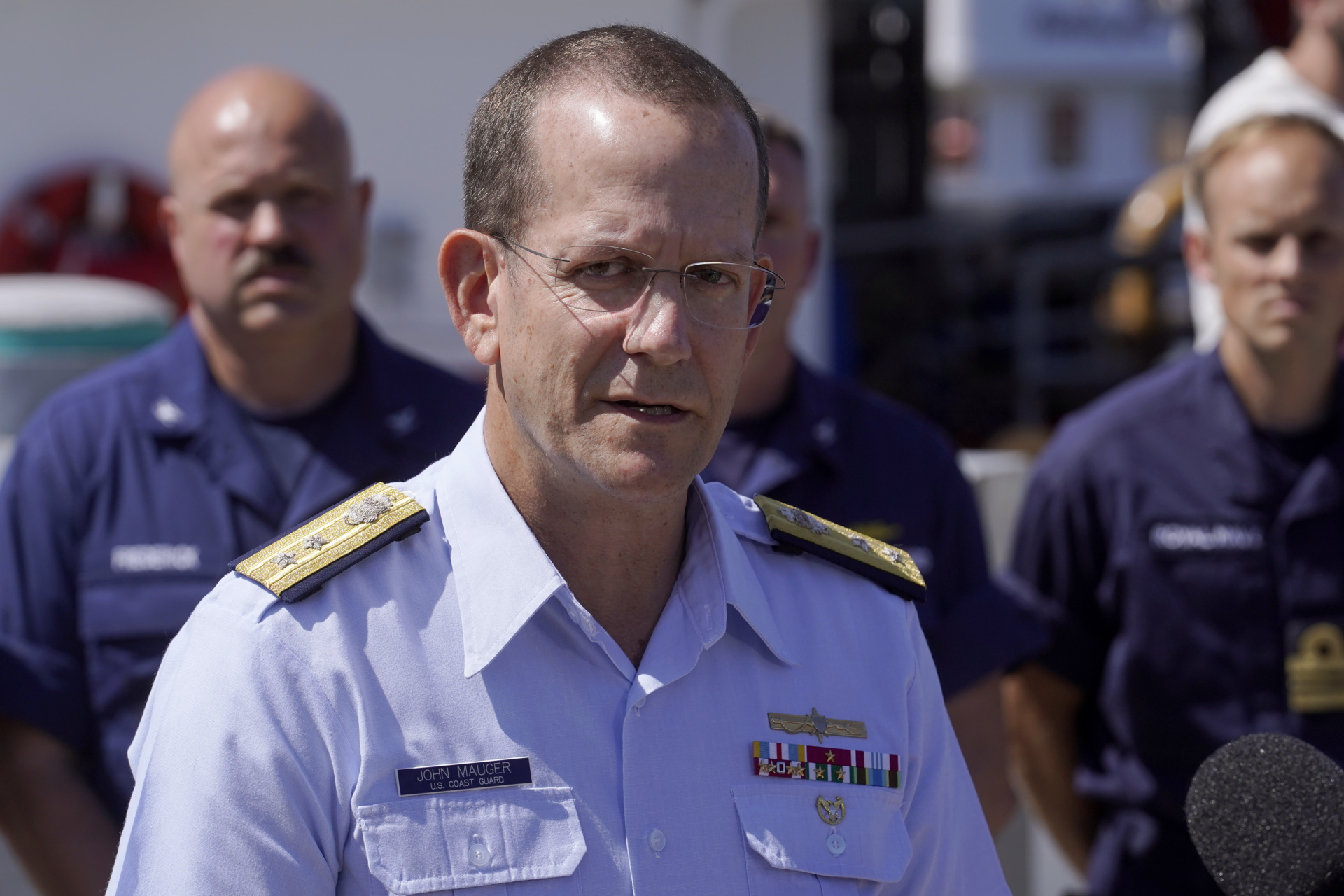
U.S. Coast Guard Rear Adm. John Mauger, commander of the First Coast Guard District, at a press conference on June 22, 2023, at Coast Guard Base Boston, in Boston. The missing submersible Titan imploded near the wreckage of the Titanic, killing all five people on board, according to the U.S. Coast Guard. (AP Photo/Steven Senne)
Update, 2:45 p.m. ET: OceanGate has issued a statement that they now believe the passengers of the submersible have died.
“We now believe that our CEO Stockton Rush, Shahzada Dawood and his son Suleman Dawood, Hamish Harding, and Paul-Henri Nargeolet, have sadly been lost,” the company stated.
Update, 2:35 p.m. ET: According to a memo obtained CNN, the debris is from the missing submersible’s external body, and it was found about 500 meters from the bow of the Titanic. The search for the crew is still ongoing.
Update, 1:23 p.m. ET: Sky News reports that friends of the Titan’s passengers have been informed that “a landing frame and a rear cover from the submersible” was found.
BREAKING: Friend of two of the men missing on board the submersible confirms the debris found was “a landing frame and a rear cover from the submersible”, after receiving WhatsApp message live on Sky News.
Latest here: https://t.co/L29qKaj8nR
Sky 501 pic.twitter.com/JtqbuhBG6w
— Sky News (@SkyNews) June 22, 2023
The U.S. Coast Guard is scheduled to hold a press conference at 3:00 p.m. to discuss the findings.
This is a developing story.
***
“A debris field was discovered within the search area,” says the U.S. Coast Guard’s first district command, the body coordinating the rescue mission for the civilian Titan submersible, which went missing on Sunday while diving to the wreck of the RMS Titanic.
The new data of a “debris field” has been passed to experts for analysis, said the USCG.
A debris field was discovered within the search area by an ROV near the Titanic. Experts within the unified command are evaluating the information. 1/2
— USCGNortheast (@USCGNortheast) June 22, 2023
The development will not be a happy one for the now multitude of military and civilian ships, underwater robots, and aircraft patrolling a grid around the last known position of the Titan, as it may support the “implosion” thesis.
When the submarine lost contact on Sunday, it was hoped for a best-case scenario where the craft had lost power but was undamaged, allowing those onboard to survive for days more with the 96-hours of emergency oxygen onboard. Yet if the experimental carbon fibre hull imploded from the immense pressure from the depth of water around the Titanic wreck, it would certainly have killed all aboard.
Hopes were raised this week when sonar buoys surveying the depths detected what was described as banging, which could have been caused by survivors inside the submersible tapping on the hull in the hope of being heard. Yet the USCG later said that after analysis, the sound was likely just “background ocean noise.”
The submersible Titan dived with two members of crew and three passengers in the early hours of Sunday morning and was due to stay underwater on a tour of the wreckage of the RMS Titanic until that afternoon. Approximately an hour and three-quarters into the descent, the vessel lost contact with the surface and the alarm was raised later that day.
An international effort at locating the Titan is underway, with Canadian, U.S., French, and private ships and aircraft assisting with the increasingly urgent effort. Diving robots that can withstand the enormous pressure of the deep water around the Titanic wreck are also in use.
When the Titan departed its mothership, it was carrying approximately 96-hours of emergency oxygen onboard, a reserve which — at estimated usage — would have run out this morning. But as reported, the deadline is hard to accurately pin down as so much is unknown about the state of the craft, the health of those onboard, and how quickly they are consuming oxygen.
See past live update reporting here.
The submergible vessel called the Titan, operated by OceanGate Expeditions, has five people on board and only enough oxygen for up to 96 hours from the time it descends. The 21-foot craft began its descent in the North Atlantic on Sunday to visit the wreck site of the RMS Titanic, but it lost contact with the surface less than two hours later, according to authorities.
OceanGate Expeditions sells seats on the Titan at $250,000 apiece. The vessel was carrying three fee-paying passengers: British billionaire Hamish Harding, Pakistani tycoon Shahzada Dawood and his son Suleman. The other two on board have been identified as Paul-Henri “PH” Nargeolet, a veteran diver and expert on the Titanic wreck, and Stockton Rush, the CEO of OceanGate Expeditions.
The U.S. and Canadian Coast Guards have deployed ships and planes in an intensive search for the Titan, which was attempting to dive to the Titanic wreck site some 400 miles off the coast of Newfoundland, Canada, and 12,000-12,500 ft. below sea level. The rescuers have deployed two camera-equipped remote-operated robots that can scan the seafloor in real-time at depths other vessels can’t reach.
The depth of such a dive makes rescue efforts especially difficult because very few vessels are able to travel to that depth. On top of that, the choppy waters of the North Atlantic are prone to heavy fog and storms, making even an aerial search of the surface challenging.
Coast Guard Captain Jamie Frederick told reporters on Wednesday that the rescue efforts are covering an area over two-times the size of the state of Connecticut in waters two and a half miles deep.
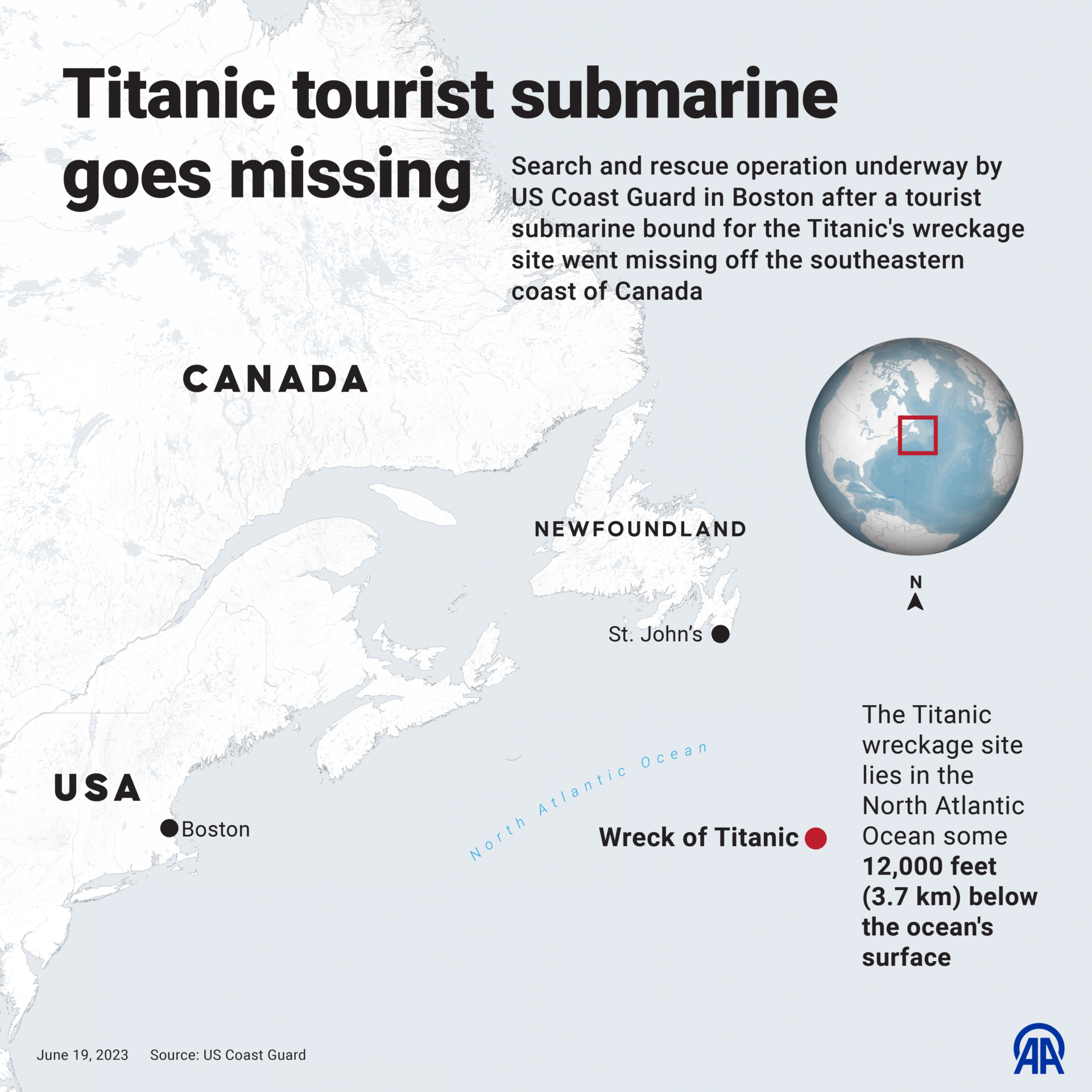
Map of the search and rescue operation underway by the U.S. Coast Guard for the Titan tourist sub. (Yasin Demirci/Anadolu Agency via Getty Images)
On Wednesday, a Canadian military surveillance aircraft detected underwater noises that have been described as “banging noises.” The Coast Guard wrote on Twitter that a Canadian P-3 Orion had “detected underwater noises in the search area.” Searchers then moved an underwater robot to that area to search. In his press conference on Wednesday, Coast Guard Captain Frederick said they could not be certain the noises were coming from the missing vessel.
“We don’t know what they are, to be frank,” he said, but added that the noises may help the rescue teams narrow their search.
Time’s Up: Titanic Sub Past 96-Hour Mark, Coastguard Says ‘Banging’ Noise is Just the Sea https://t.co/4xJ2hwiEN5
— Breitbart London (@BreitbartLondon) June 22, 2023
OceanGate Safety Practices Under Scrutiny
OceanGate Expeditions is also under increased scrutiny as documents show that the company had been warned there might be catastrophic safety problems posed by the way the experimental vessel was developed.
David Lochridge, OceanGate’s director of marine operations, said in a 2018 lawsuit that the company’s testing and certification was insufficient and would “subject passengers to potential extreme danger in an experimental submersible.”
Breitbart’s Lucas Nolan reports:
David Lochridge, the Titan project’s director of marine operations, was let go in 2018 after calling for more stringent safety inspections of the submersible, including “testing to prove its integrity.” Lochridge was quoted as having “disagreed with OceanGate’s position to dive the submersible without any non-destructive testing to prove its integrity, and to subject passengers to potential extreme danger in an experimental submersible.”
In 2018, Lochridge published a report that was critical of the company’s research and development efforts for the vessel, according to legal filings. He had “strongly encouraged that OceanGate utilize a classification agency, such as the American Bureau of Shipping, to inspect and certify the Titan.” OceanGate, however, turned down both requests.
Despite the concerns expressed by Lochridge, OceanGate declined to have the submersible independently inspected, a practice known as “classing” that is common in the industry. This procedure entails appointing a neutral group to guarantee that submersibles and other vessels adhere to high technical standards set by the entire industry. It is thought to be essential for making sure a vessel is fit for operation.
Classification could take years, according to OceanGate, who defended their choice by saying that it would be “anathema to rapid innovation.” The company stated, “While classing agencies are willing to pursue the certification of new and innovative designs and ideas, they often have a multi-year approval cycle due to a lack of pre-existing standards… Bringing an outside entity up to speed on every innovation before it is put into real-world testing is anathema to rapid innovation.”
It has since come to light that the vessel didn’t even appear to have a basic safety beacon installed.
For its part, OceanGate insisted that Lochridge was “not an engineer and was not hired or asked to perform engineering services on the Titan.” The firm also says the vessel under development was a prototype, not the now-missing Titan.
The Marine Technology Society, which describes itself as “a professional group of ocean engineers, technologists, policy-makers, and educators,” also expressed concern that year in a letter to OceanGate CEO Stockton Rush. The society said it was critical that the company submit its prototype to tests overseen by an expert third party before launching in order to safeguard passengers.

U.S. Coast Guard Capt. Jamie Frederick, center, faces reporters during a news conference, Tuesday, June 20, 2023, at Coast Guard Base Boston about the search for the missing submersible near the wreck of the Titanic. (AP Photo/Steven Senne)

An aerial view of the Bahamian research vessel Deep Energy ship after it was arrived in the area for OceanGate Titan submersible search. (U.S. Coast Guard via Getty Images)
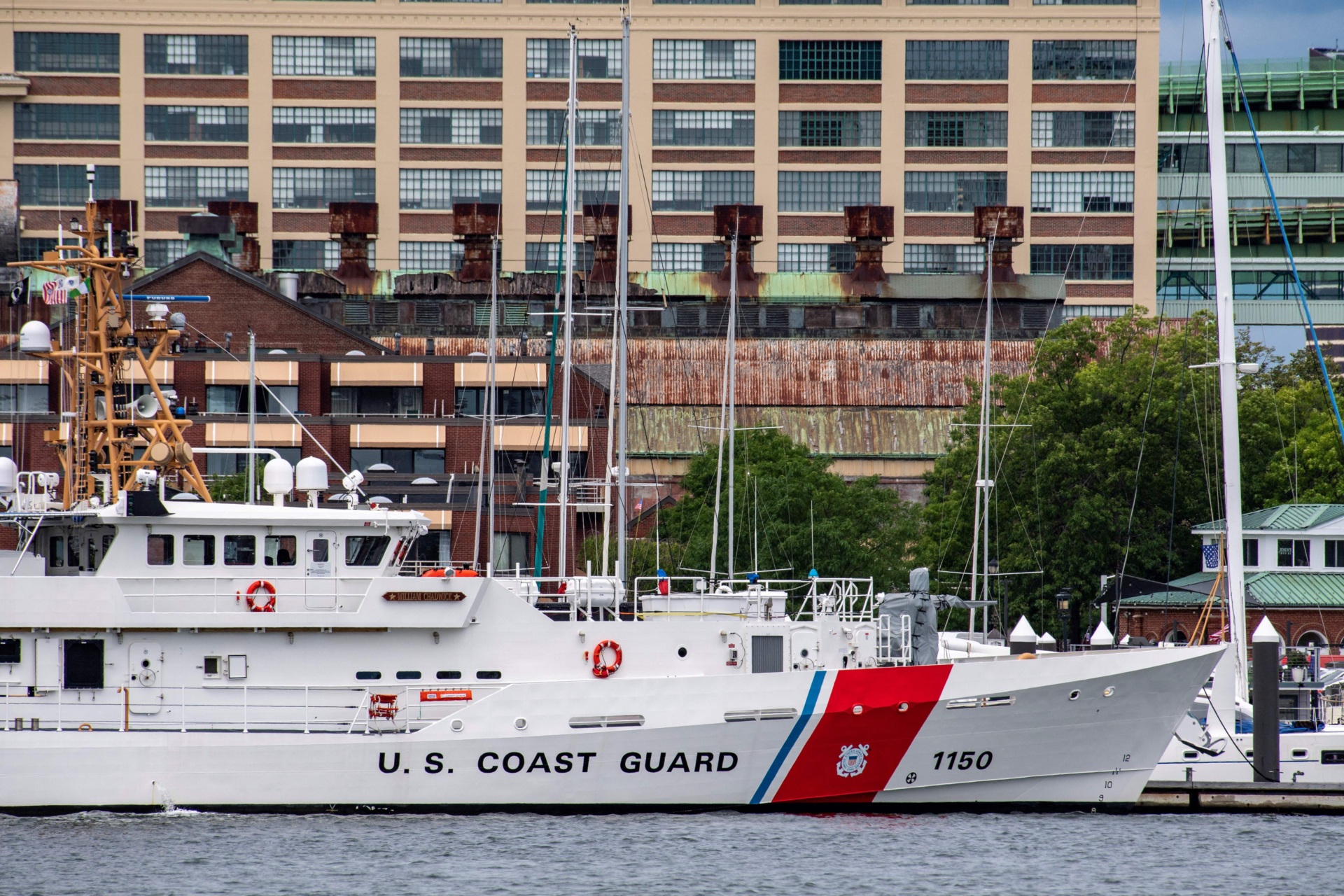
A U.S. Coast Guard vessel sits in port in Boston Harbor across from the U.S. Coast Guard Station Boston on June 19, 2023. (Joseph Prezioso/AFP via Getty Images)
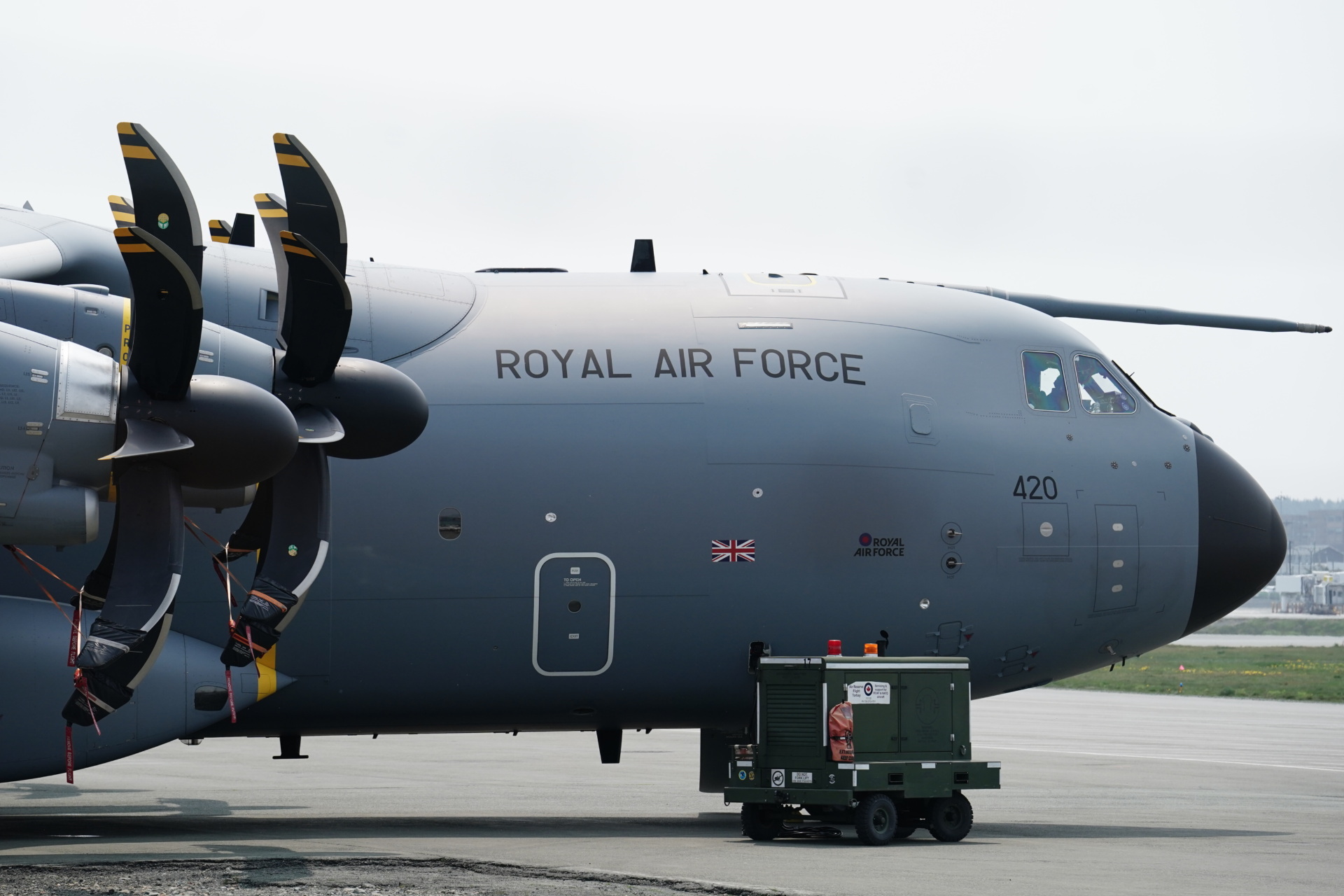
A Royal Air Force plane arrives at St John’s International Airport in Newfoundland, Canada after it received a request for assistance in the hunt for the missing Titan submersible on June 22, 2023. (Jordan Pettitt/PA Images via Getty Images)
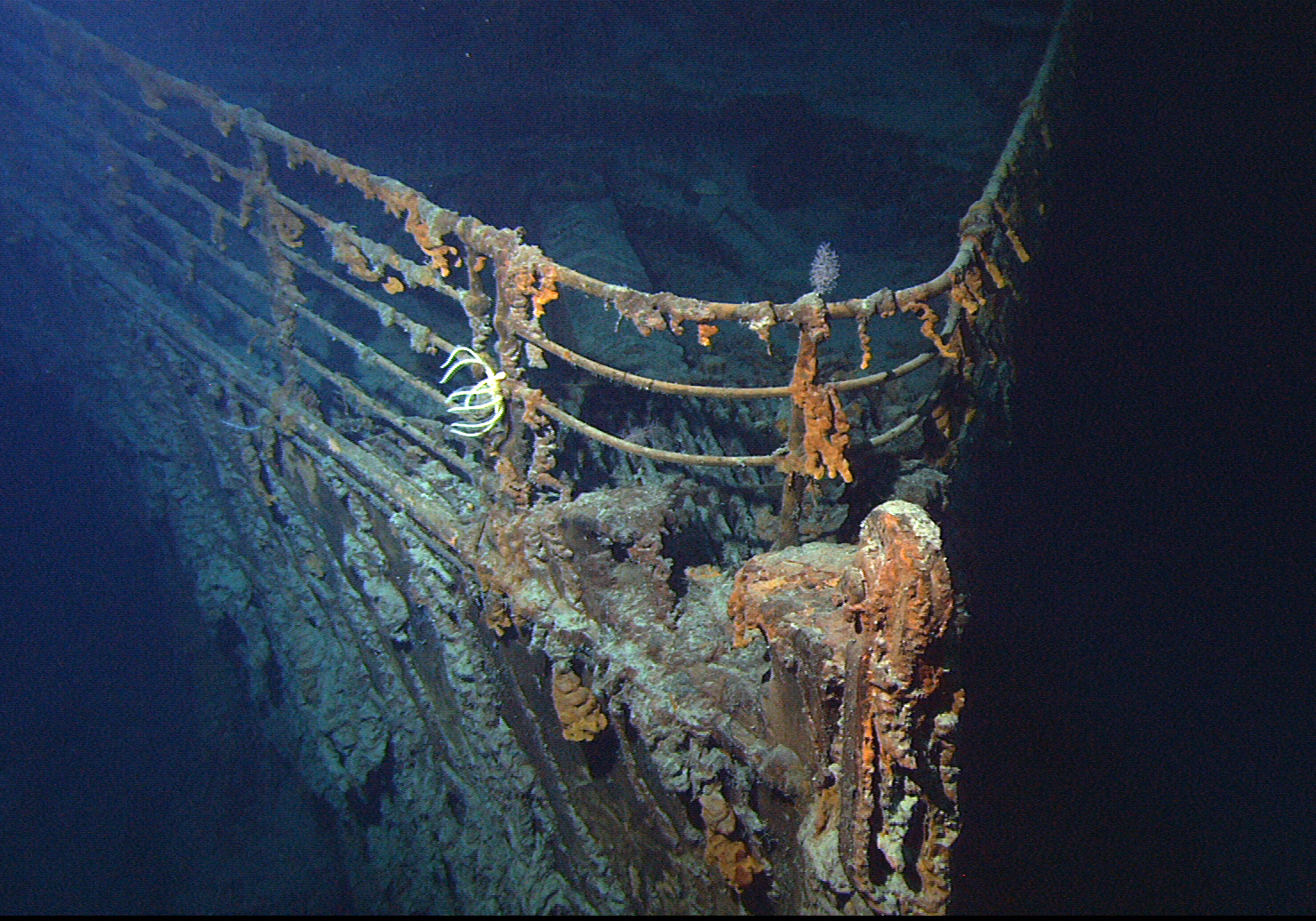
View of the bow of the RMS Titanic photographed in June 2004 by the ROV Hercules during an expedition returning to the shipwreck of the Titanic. (Courtesy of NOAA/Institute for Exploration/University of Rhode Island)

Submersible pilot Randy Holt, right, communicates with the support boat as he and Stockton Rush, left, CEO and Co-Founder of OceanGate, dive in the company’s submersible, “Antipodes,” about three miles off the coast of Fort Lauderdale, Florida, on June 28, 2013. (AP Photo/Wilfredo Lee, File)

This photo provided by OceanGate Expeditions shows a submersible vessel named Titan used to visit the wreckage site of the Titanic. (OceanGate Expeditions via AP)
Past Titan Passengers Come Forward with Harrowing Stories
Former passengers on OceanGate’s Titan submersible have also come forward with their own harrowing stories about difficulties experienced in past dives.
Mexican actor Alan Estrada shared disturbing details in a YouTube video about his own trip on the Titan during a July 2022 tour to the Titanic wreck, during which the sub’s batteries drained quickly and the trip was cut short, the UK Daily Mail reports.
“For safety reasons this is completely understandable when the last battery—the submersible has two batteries—when the second battery has only 40 percent left, it is necessary to return to the surface for safety,” Estrada said. “This means that the four hours that they tell you that you are going to be down there are not fulfilled.”
Estrada also said that Titan experienced communication difficulties during his trip when the sub lost contact with the surface for a period of time.
“After 1,000 meters Scott, the pilot, detects a failure in his communication system,” Estrada explained. “It is vital that we cannot communicate with the surface, otherwise we can get lost and drift in the middle of the ocean.”
After descending to about 21,000 feet, the sub pilot on Estrada’s expedition released the ballast tanks from each side of the vessel in order to floated back to the surface. They regained communication at some point along the way.
Why Visit the Titanic?
The missing tourist sub has also drawn attention to the lucrative high-risk tourism industry for the Titanic wreck and brought questions of why anyone would pay a quarter of a million dollars to view a grave site two and a half miles below sea level.
The doomed luxury liner has long been a source of fascination as the quintessential morality tale of the Gilded Age.
The White Star Line’s RMS Titanic set sail on its maiden voyage from England to New York in April 1912 with 2,224 passengers and crew on board, including some of the most famous tycoons and aristocrats of the day.
But disaster struck on the night of April 15, when the ship hit an iceberg and sank. About 1,500 passengers and crew lost their lives in the freezing waters of the North Atlantic. The lucky ones who escaped in lifeboats—of which there were not enough for every passenger—were rescued the next morning by the RMS Carpathia.
The sinking of the Titanic remains the most famous maritime disaster in history and the fourth most deadly of the twentieth century.
The disaster became popularized as an example of hubris because the ship had been touted as an “unsinkable” miracle of the industrial age.
Some also see it as an example of the Gilded Age’s class discrimination because the vast majority of the passengers who died were in second and third class. In fact, more first class male passengers survived than third class children, despite the crew’s instructions for women and children to be given priority in the limited number of lifeboats.
The official inquests and congressional hearings in Great Britain and the United States following the disaster led to important maritime reforms, including new laws requiring sufficient lifeboats and other safety features for ocean liners.
The wreck of the Titanic was located in 1985 by a U.S.-French expedition, which again sparked the public’s interest in the story of the legendary ship. This in turn inspired director James Cameron’s Oscar-winning 1997 movie Titanic and also galvanized a lucrative underwater tourism industry near the wreckage.
In fact, the wife of one of the Titan’s passengers is a descendant of two famous passengers who died on the Titanic, the New York Times reports.
Wendy Rush, the wife of OceanGate Expedition’s CEO Stockton Rush, who is on the missing submersible, is the great-great-granddaughter of Isidor and Ida Straus, two first-class passengers who were aboard the Titanic when it sank on April 15, 1912. Isidor Straus was a retail magnate and co-owner of Macy’s department store.

Isidor and Ida Straus, circa 1910. The couple were first-class passengers who died on the Titanic. Their great-great-granddaughter is the wife of OceanGate CEO Stockton Rush who is aboard the missing Titan. (Wikimedia Commons)

RMS Titanic is seen departing Southampton, England, on 10 April 1912. (Pictures from History/Universal Images Group via Getty Images)

The Aft First Class staircase leading to the a la carte restaurant on the RMS Titanic, the world’s most luxurious ocean liner at the time of its launching in April of 1912. (Ralph White/CORBIS/Corbis via Getty Images)
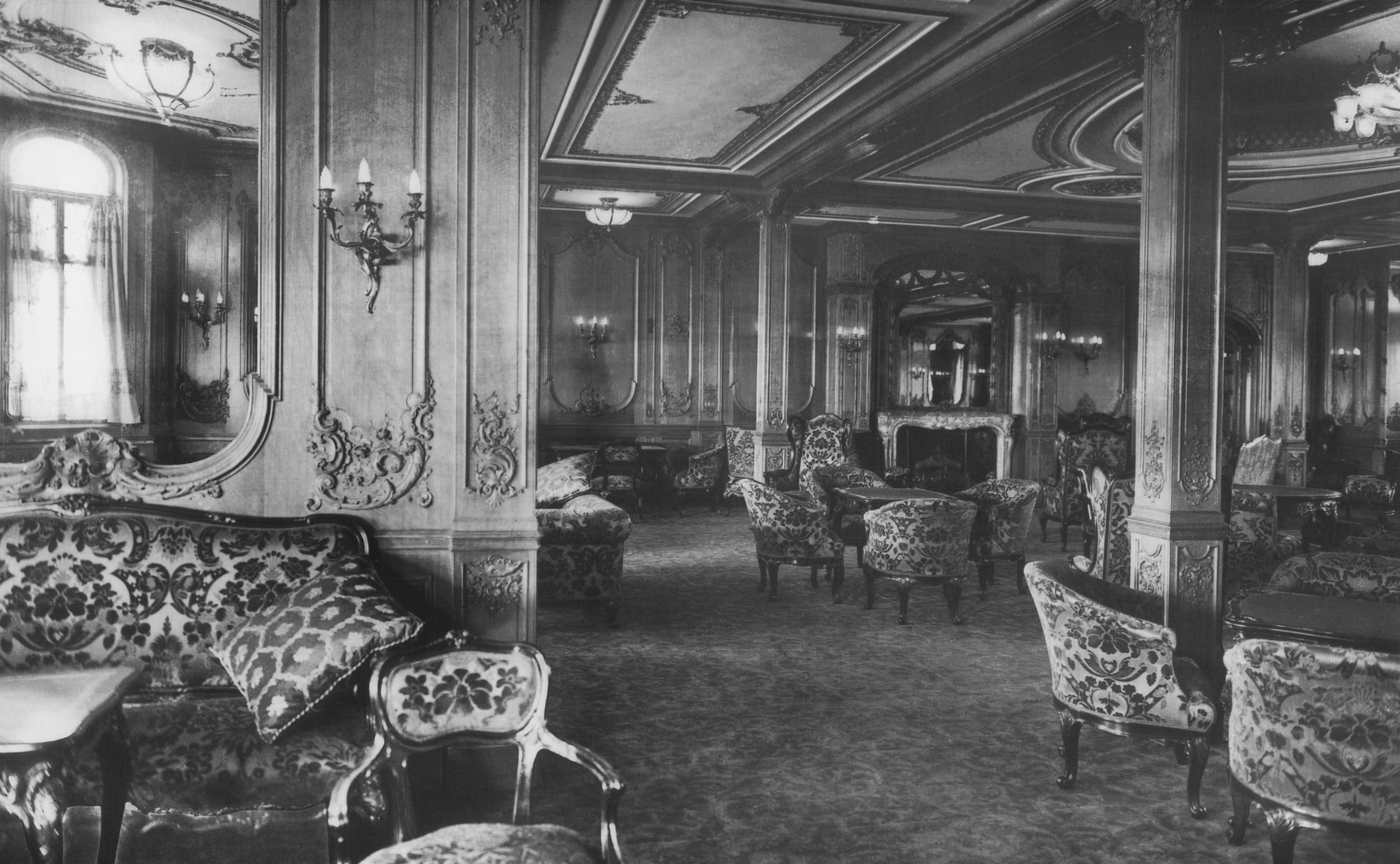
The First Class Lounge on board RMS Titanic, photographed on 4th January 1912. (Universal Images Group/Getty Images)
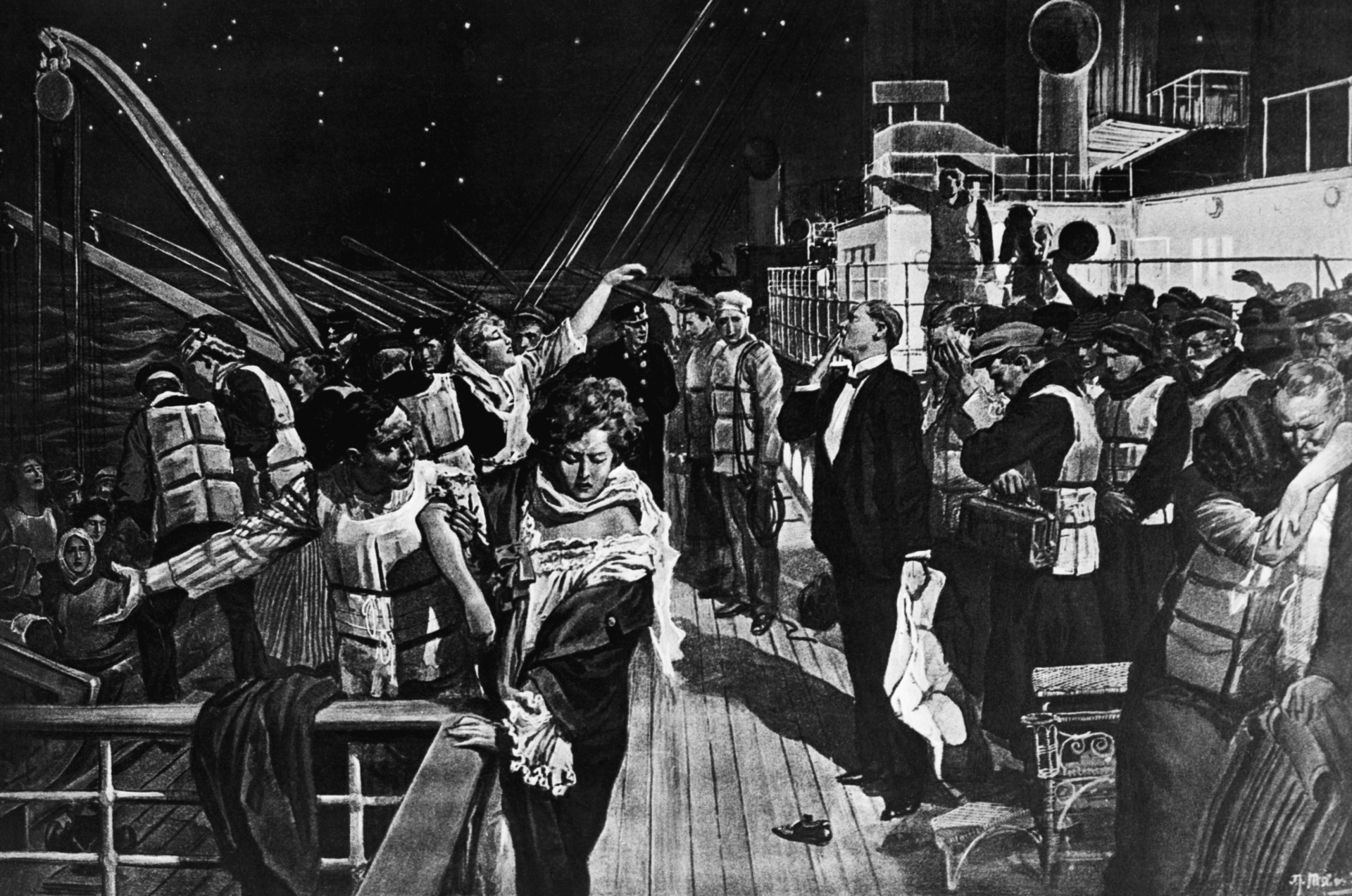
Illustration depicting women and children being loaded into life boats during the Titanic’s sinking on April 14, 1912. (Getty Images)

A lifeboat carrying a few survivors from the Titanic, seen floating near the rescue ship Carpathia on the morning of April 15, 1912, hours after the disaster. Titanic did not carry enough lifeboats to save all her passengers, and many of the available boats were launched carrying fewer than their 65-passenger capacity. (Ralph White/CORBIS/Corbis via Getty Images)
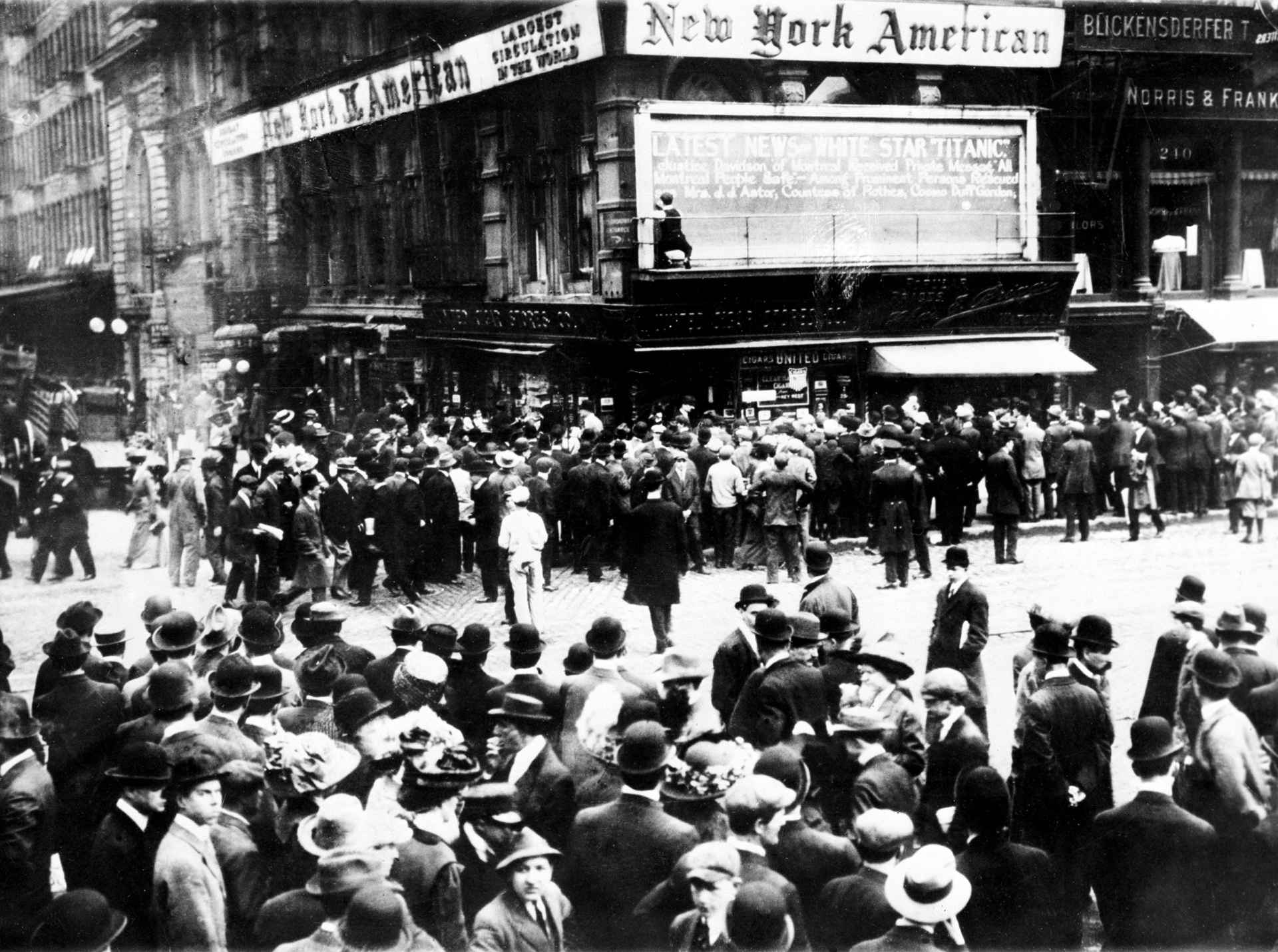
Crowds gather around the bulletin board of the New York American, in New York City, where the names of people rescued from the sinking Titanic are on display. (AP Photo)

Newspaper boy Ned Parfett sells copies of the Evening News telling of the Titanic maritime disaster, outside Oceanic House, the London offices of the Titanic’s owner, the White Star Line, in Cockspur Street, London, 16 April 1912. (Topical Press Agency/Hulton Archive/Getty Images)

A newspaper’s montage of the brief career of the Titanic in photographs and illustrations. (Hulton Archive/Getty Images)
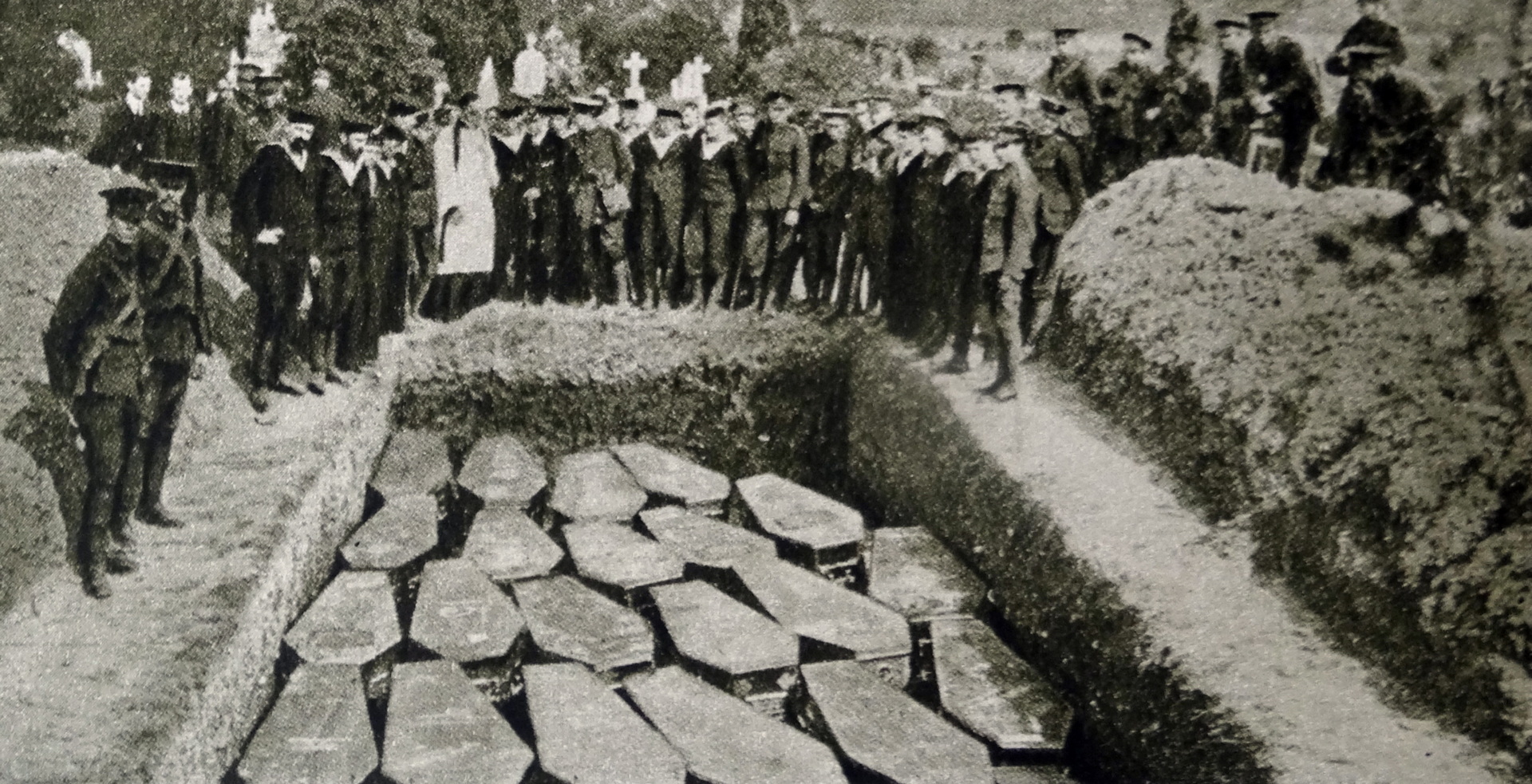
Photograph of the coffins of some of the victims of the sinking of the RMS Titanic at a mass burial. (Universal History Archive/Universal Images Group via Getty Images)

A graphic illustrates the location where the wreck of the Titanic was found upright and intact by scientists on September 1, 1985. It lies 560 miles (900 km) west of Newfoundland in water two and a half miles (4000 meters) deep. (AP Photo)

View of the bow of the RMS Titanic photographed in June 2004 by the ROV Hercules during an expedition returning to the shipwreck of the Titanic. (Courtesy of NOAA/Institute for Exploration/University of Rhode Island)
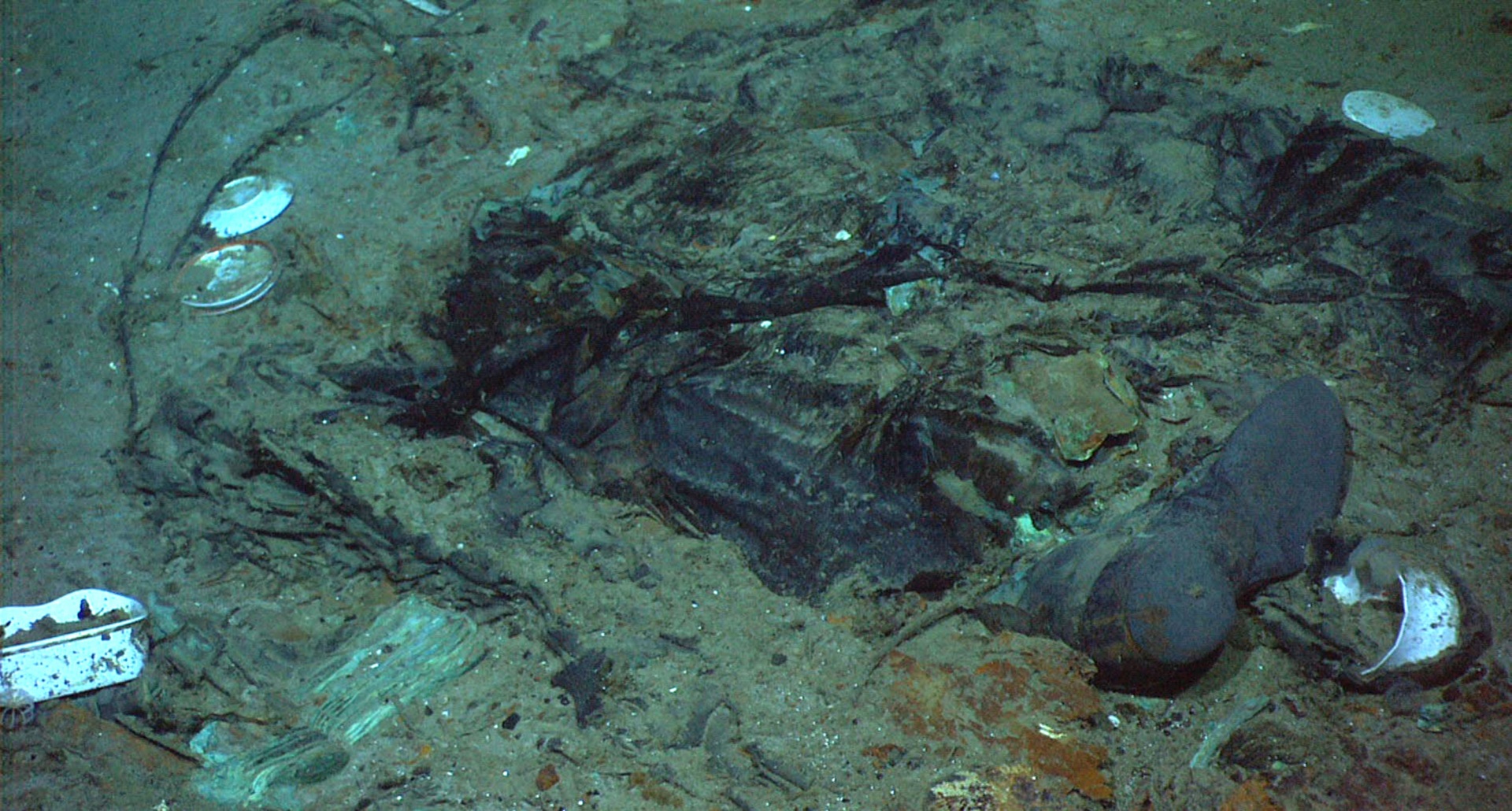
This 2004 photo shows the remains of a coat and boots in the mud on the sea bed near the Titanic’s stern. (Institute for Exploration, Center for Archaeological Oceanography/University of Rhode Island/NOAA Office of Ocean Exploration)



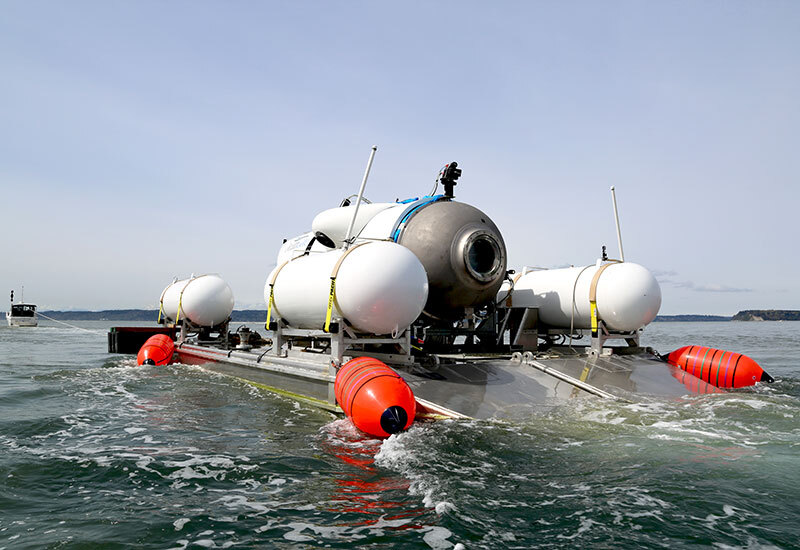
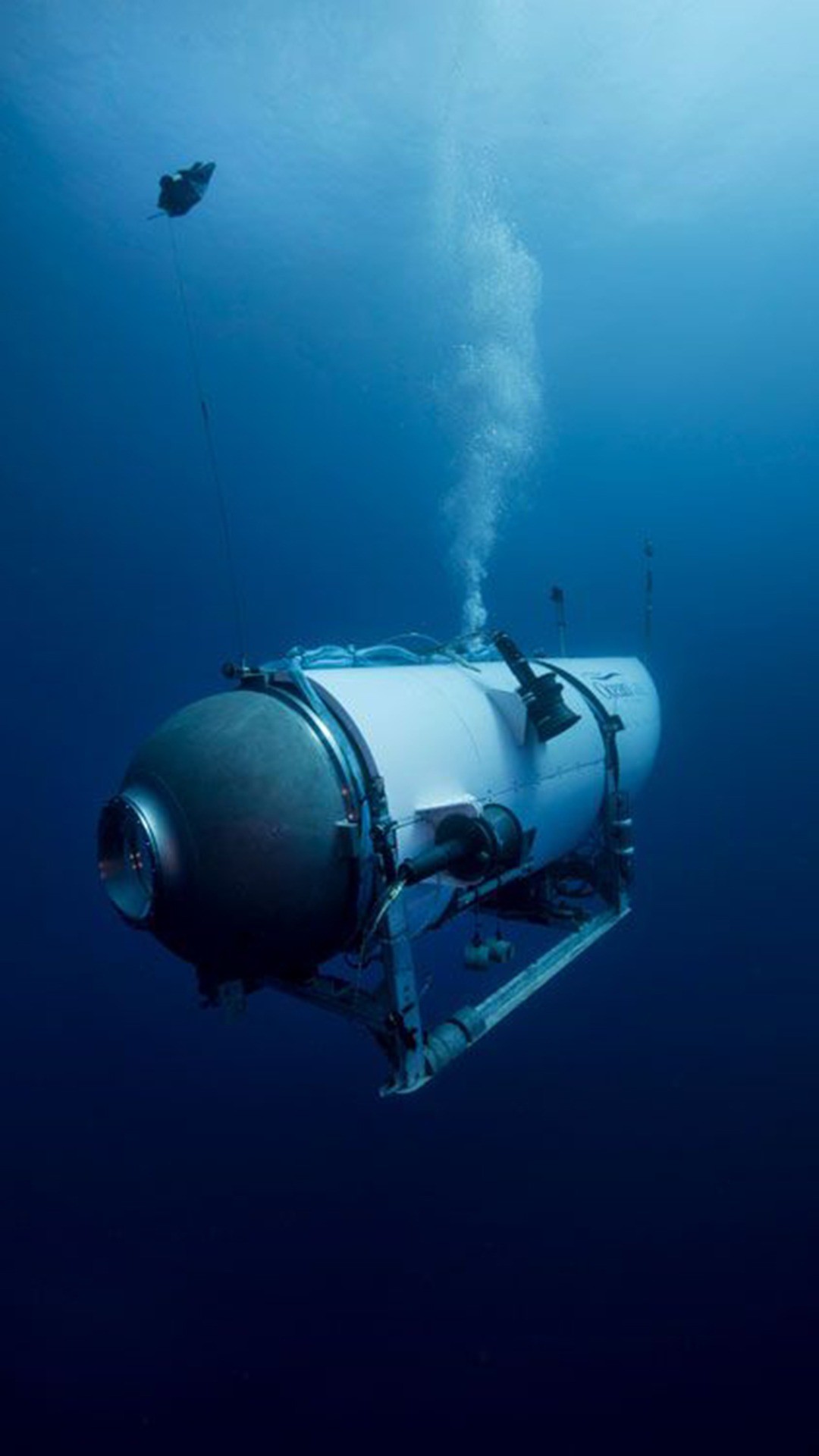

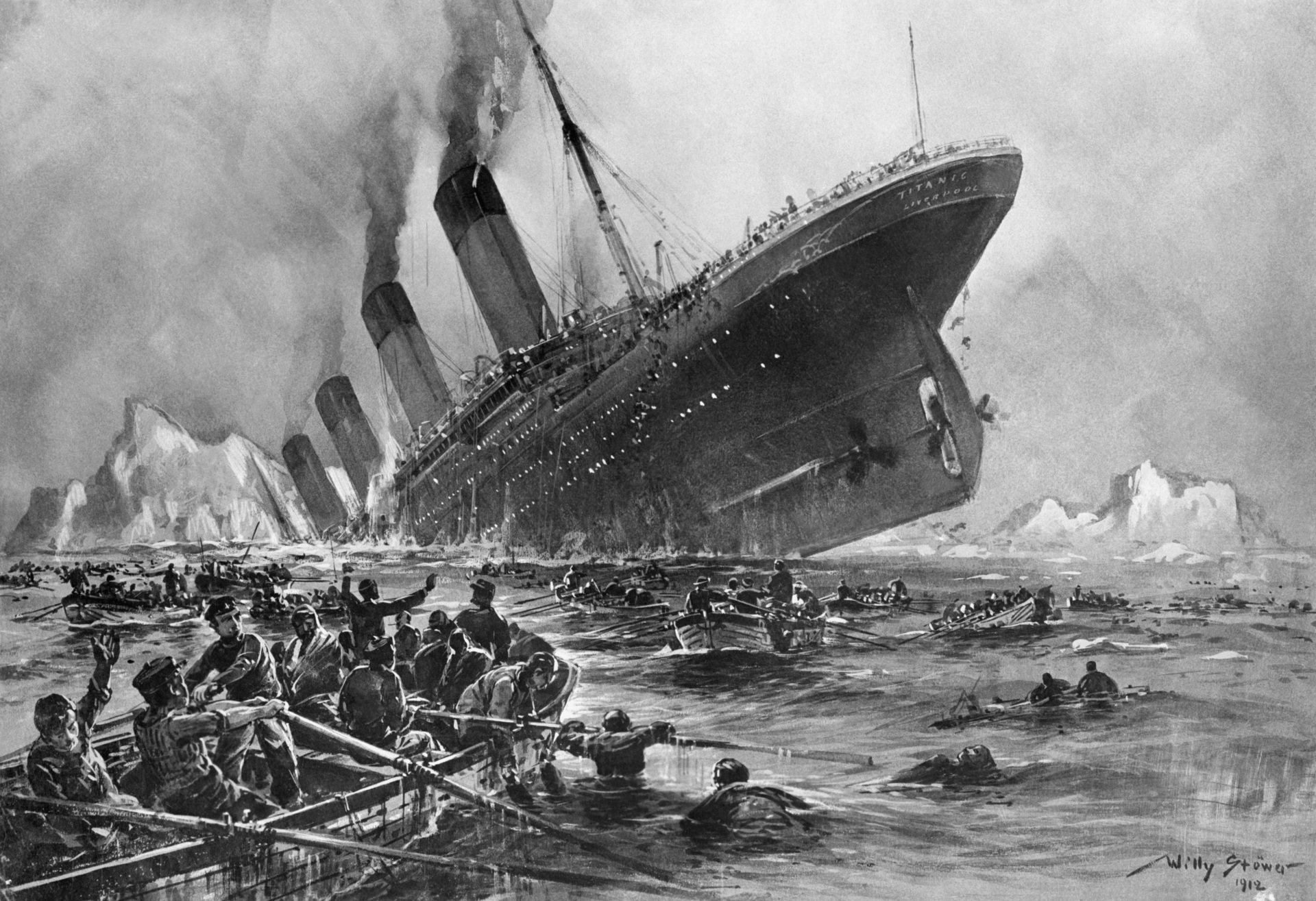
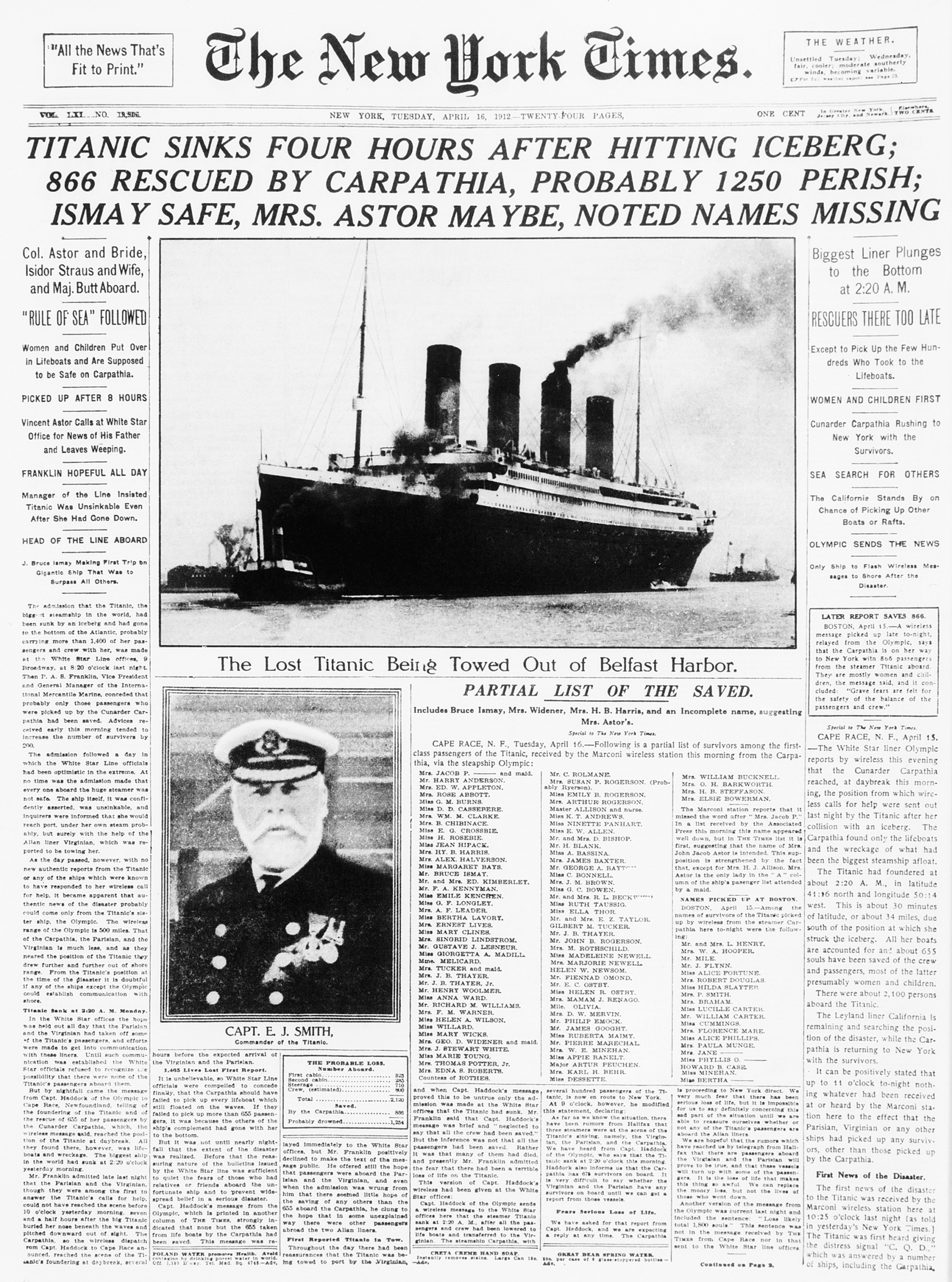




Comments are closed.